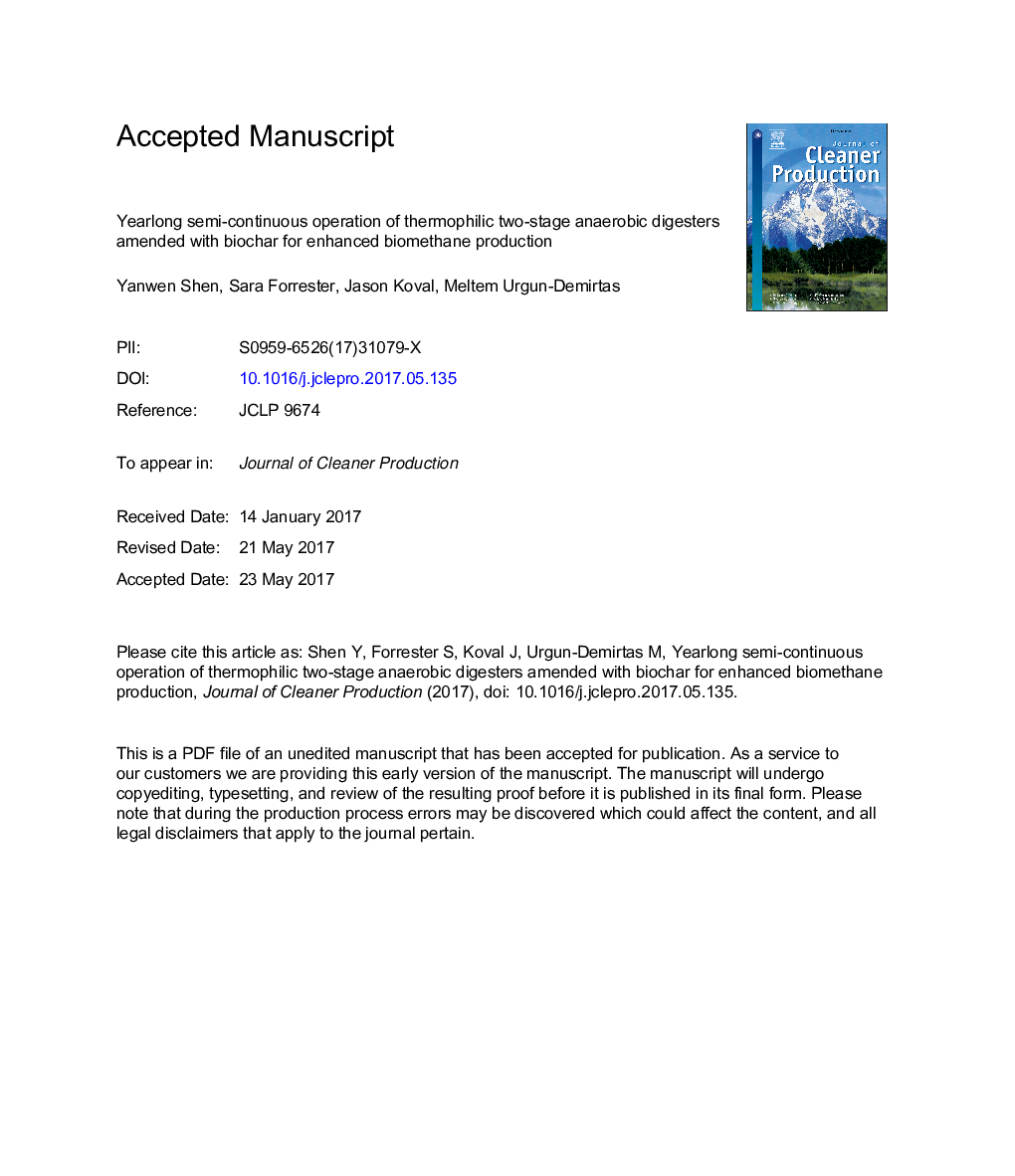| Article ID | Journal | Published Year | Pages | File Type |
|---|---|---|---|---|
| 5479497 | Journal of Cleaner Production | 2017 | 44 Pages |
Abstract
This study aimed to scale up an integrated waste-to-energy system for producing pipeline-quality biomethane from shake flasks experiments to two-stage digester systems with semi-continuous operation. The yearlong operation was successfully conducted to compare the performance of thermophilic anaerobic digestion (AD) of sewage sludge amended with corn stover biochar (CSBC) and pine biochar (PBC) to the control under various conditions. Both CSBC and PBC promoted the substrate utilization, methane productivity, and process stability of AD, while CSBC showed superior potential. CSBC enhanced methane content in biogas (CH4%) and methane production rate (PCH4) by up to 25% and 37% respectively in comparison to the control, with maximum CH4% of 95% and CH4 yield of 0.34Â L/g volatile solid (VS)-added being achieved at steady state. The biochar supplementation also led to a substantial increase of the macro- and micro-nutrients (P, K, Ca, Mg, Fe) by up to 33 times in the digestate, increasing its fertilizer value. Microbial community structure and dynamics were also investigated and compared, and in particular, CSBC promoted the abundance of Clostridia and Methanosarcina. Collectively, this study proves that pyro-biochar as an effective additive material enhances AD performance with continuous operation and that CSBC shows greater potential.
Related Topics
Physical Sciences and Engineering
Energy
Renewable Energy, Sustainability and the Environment
Authors
Yanwen Shen, Sara Forrester, Jason Koval, Meltem Urgun-Demirtas,
